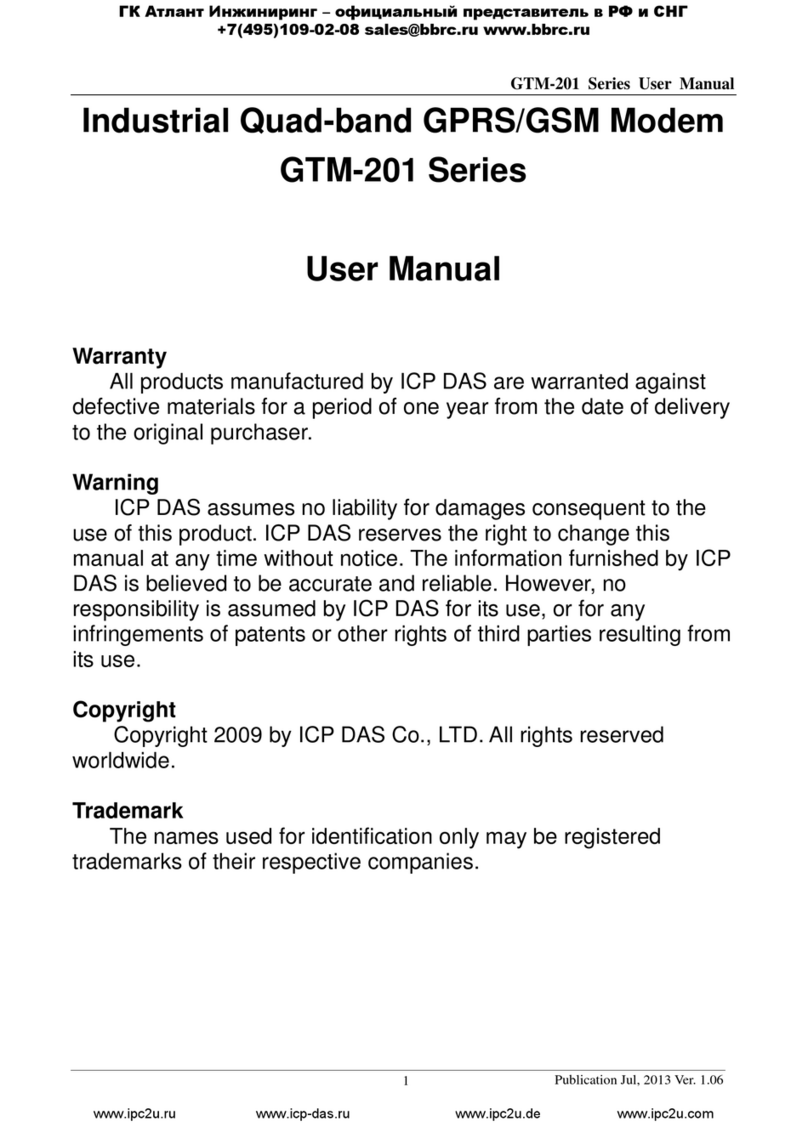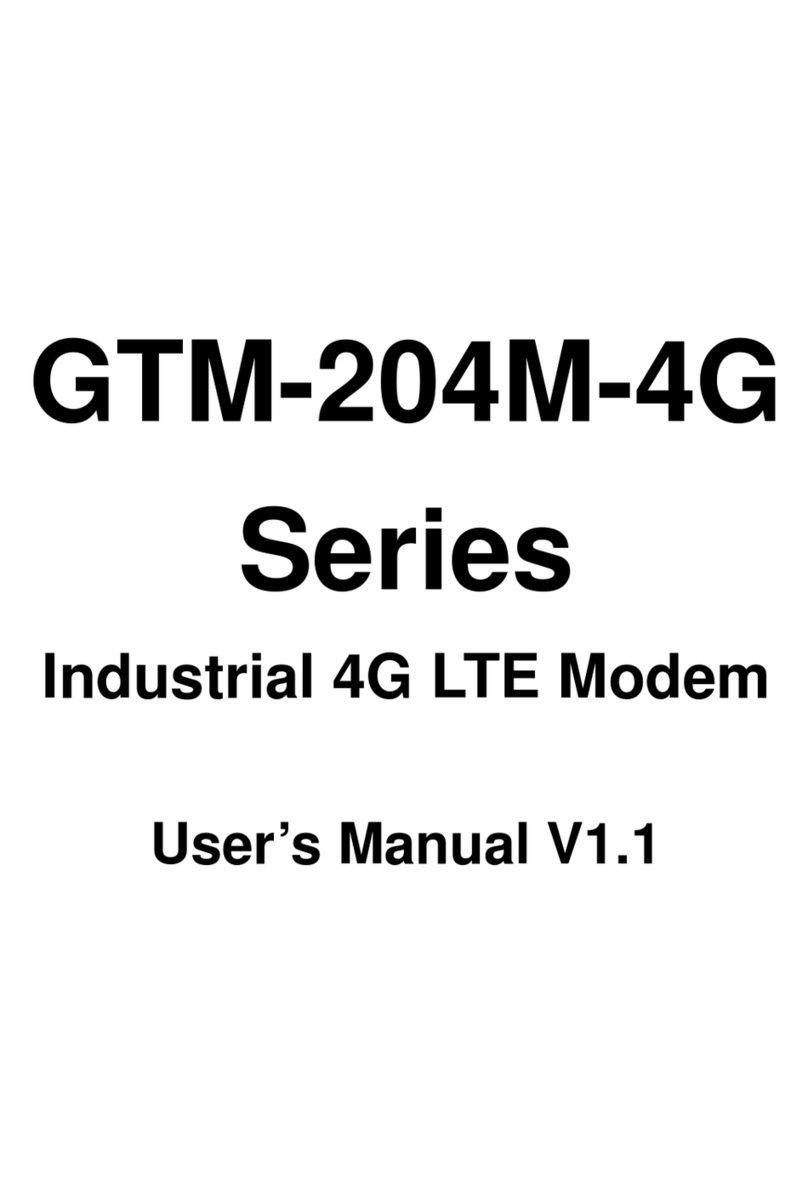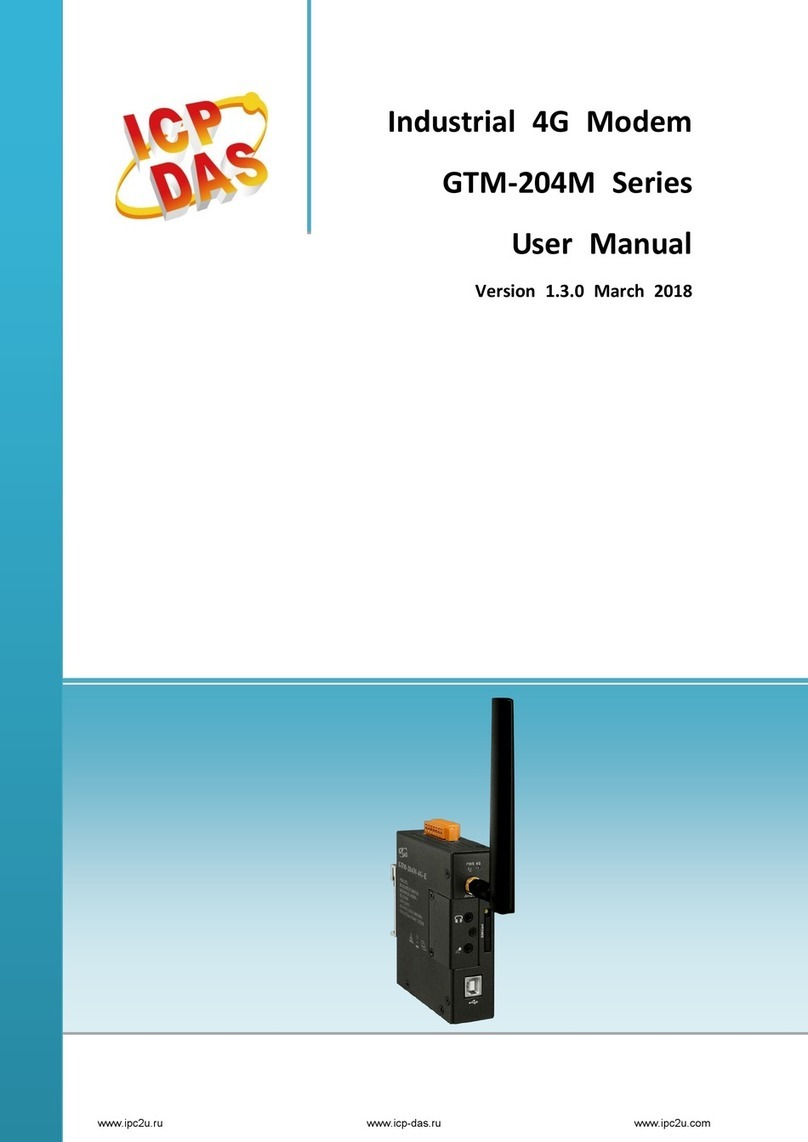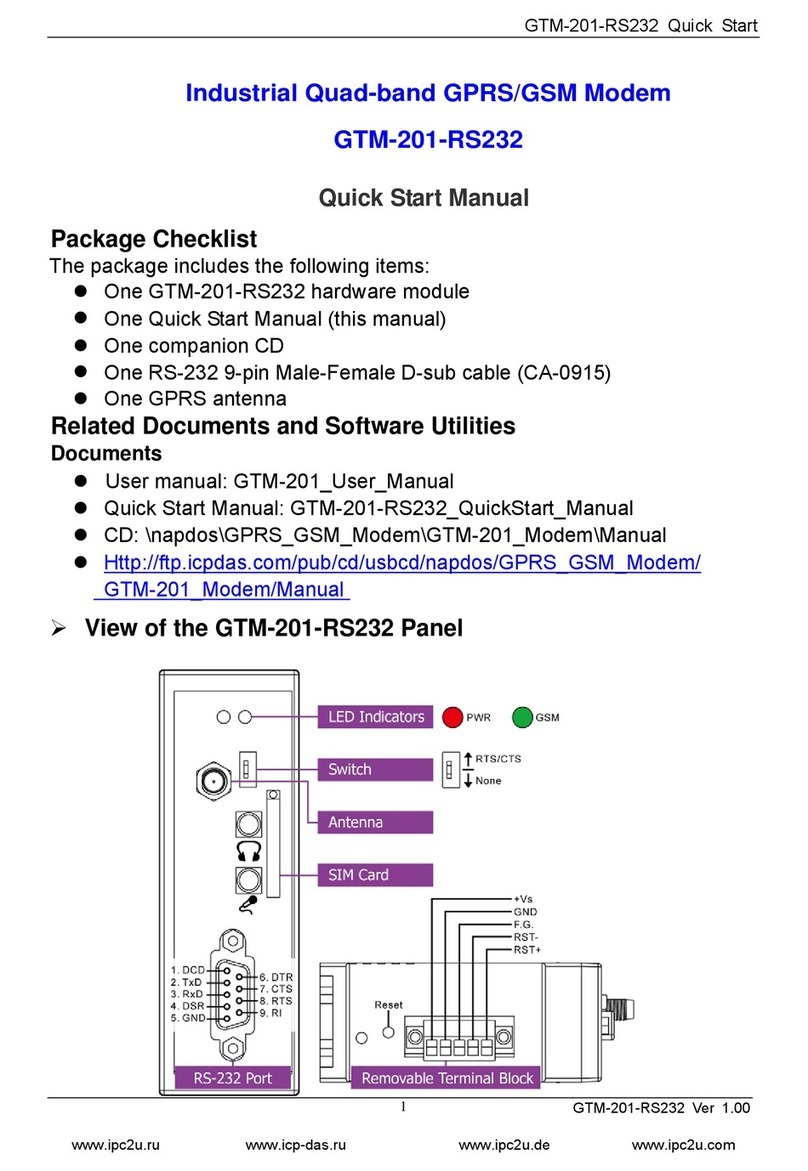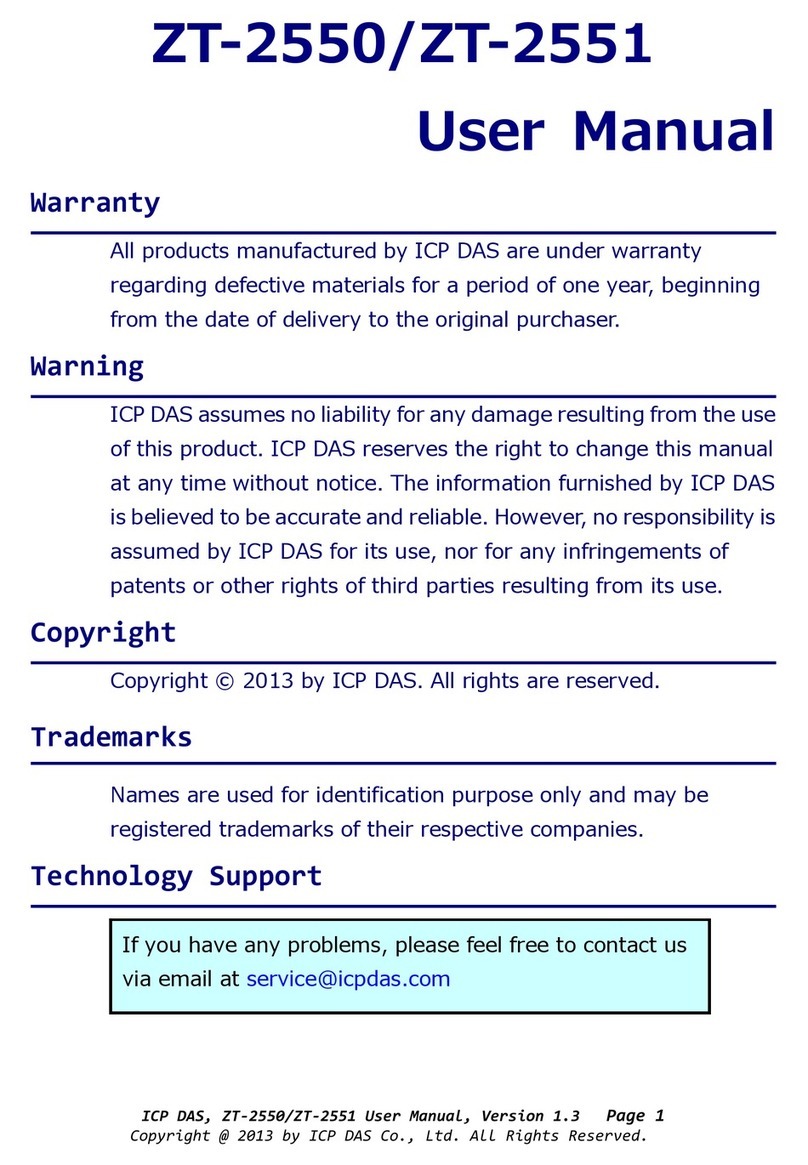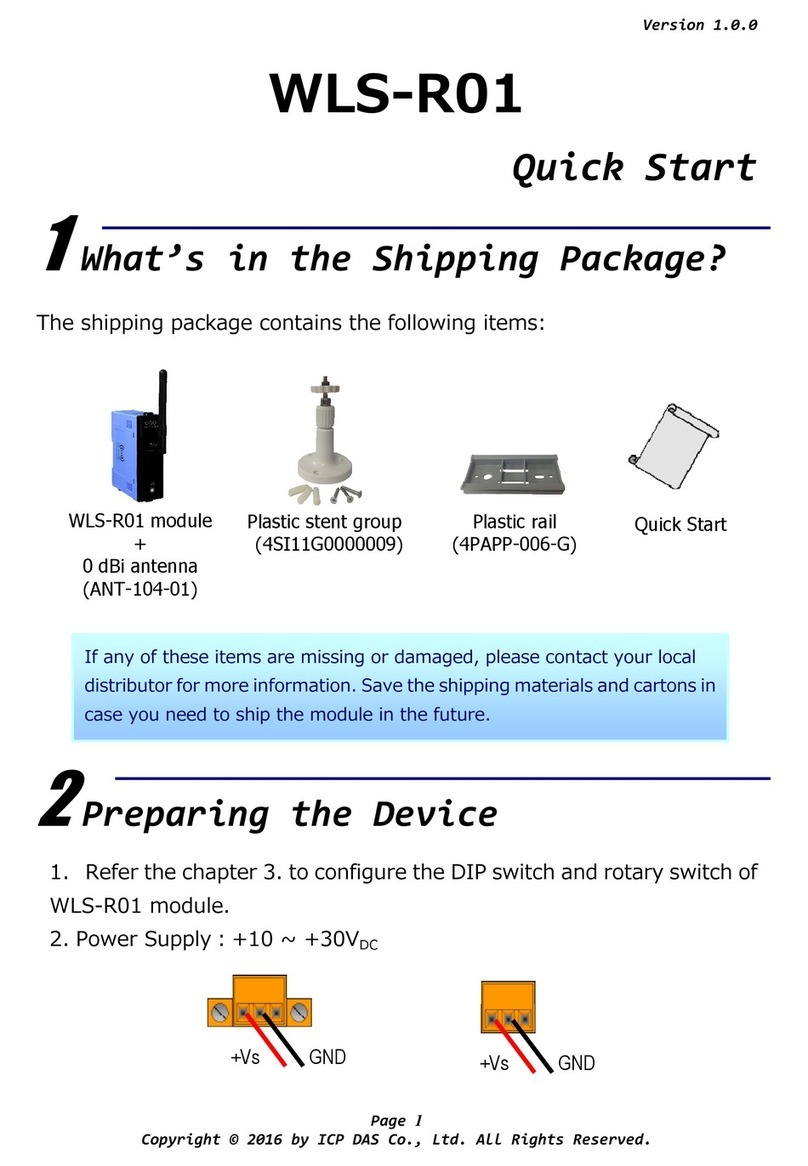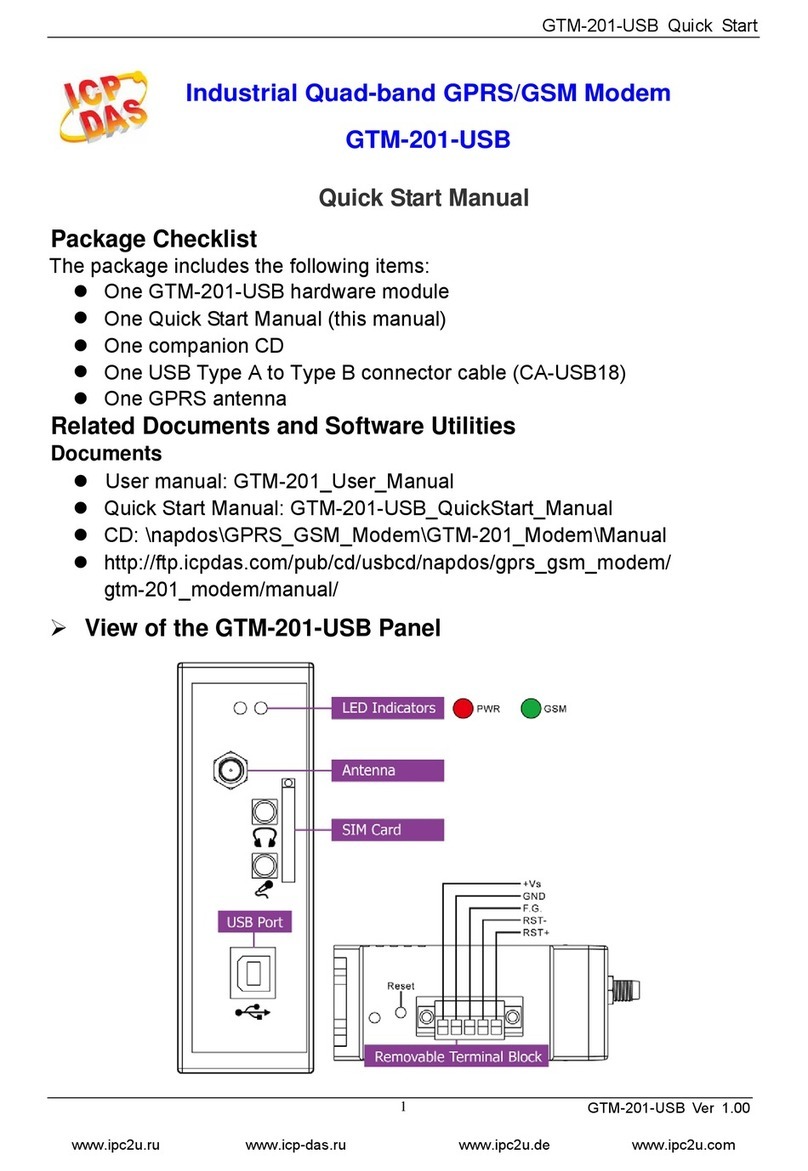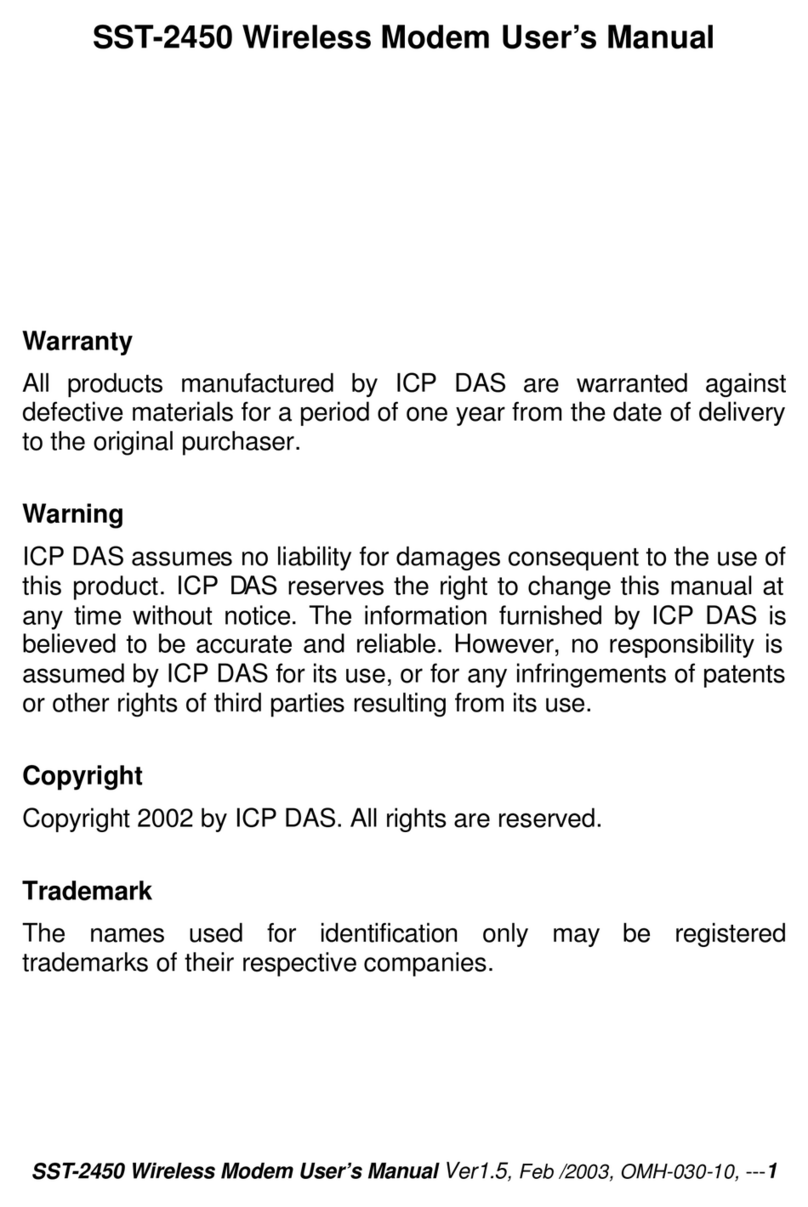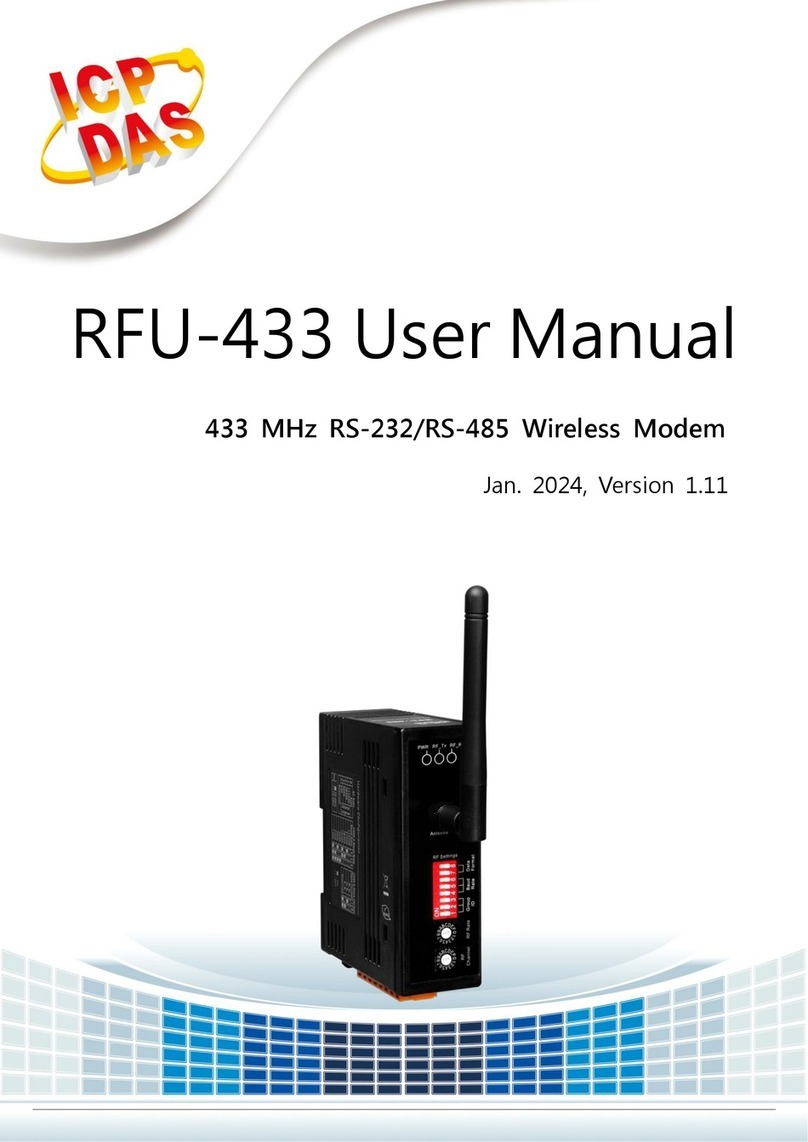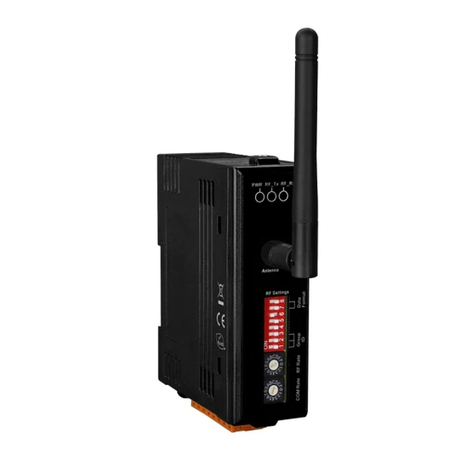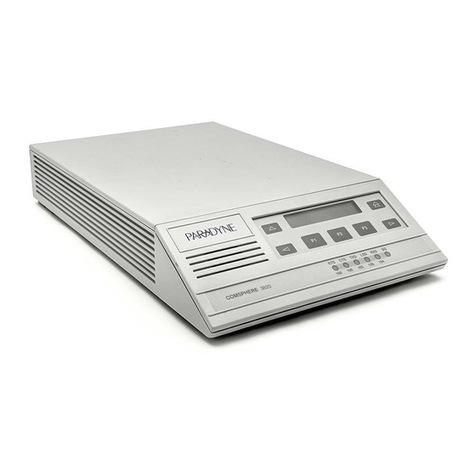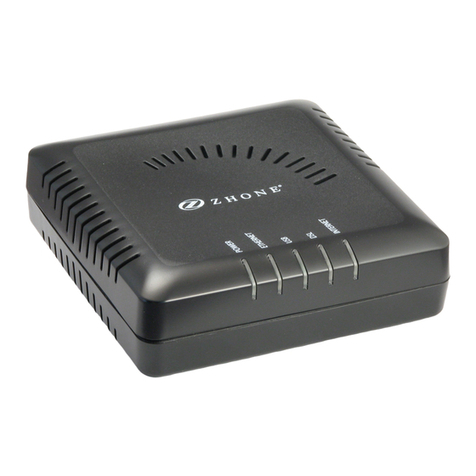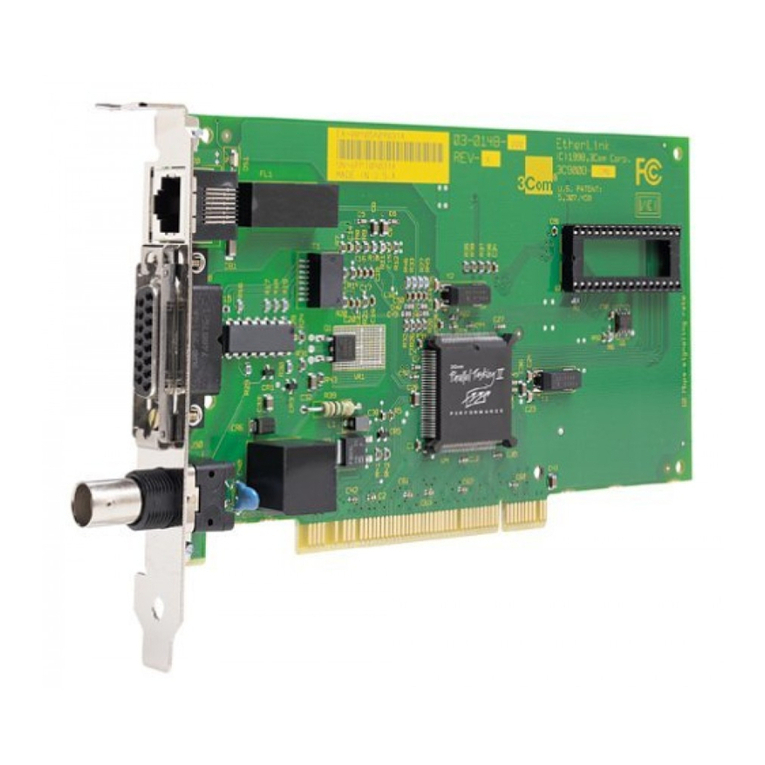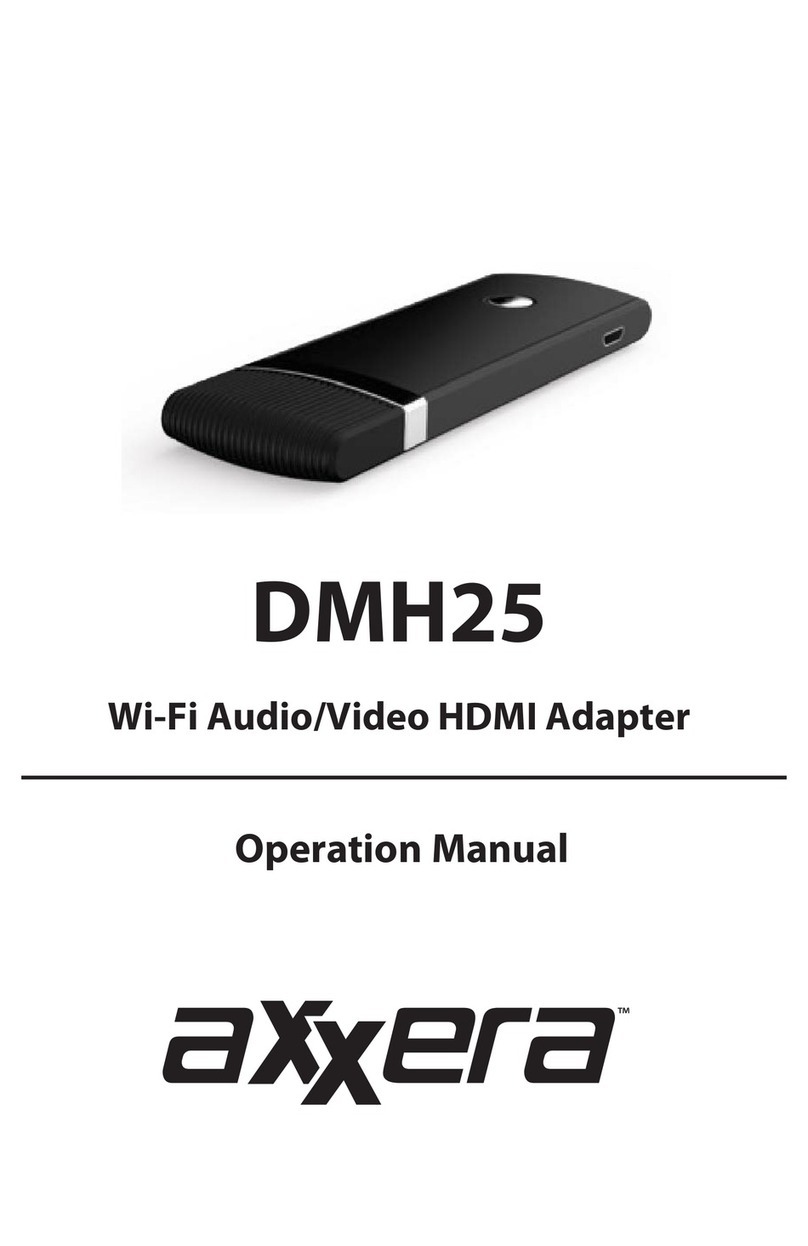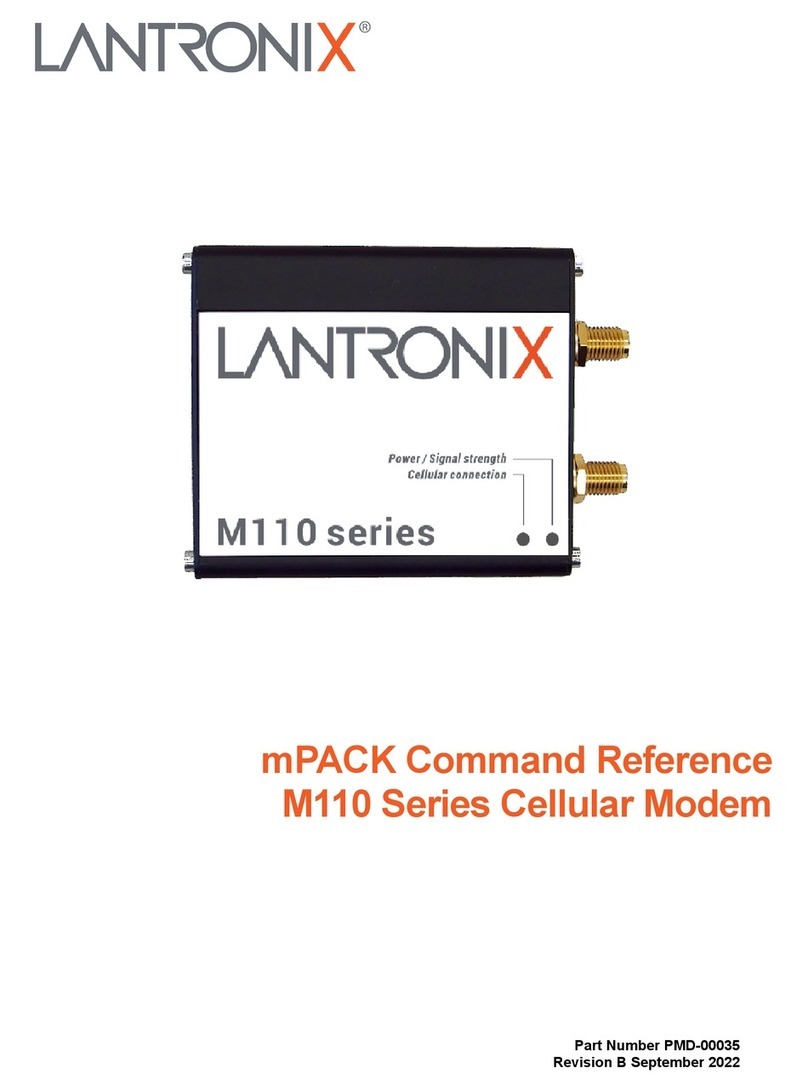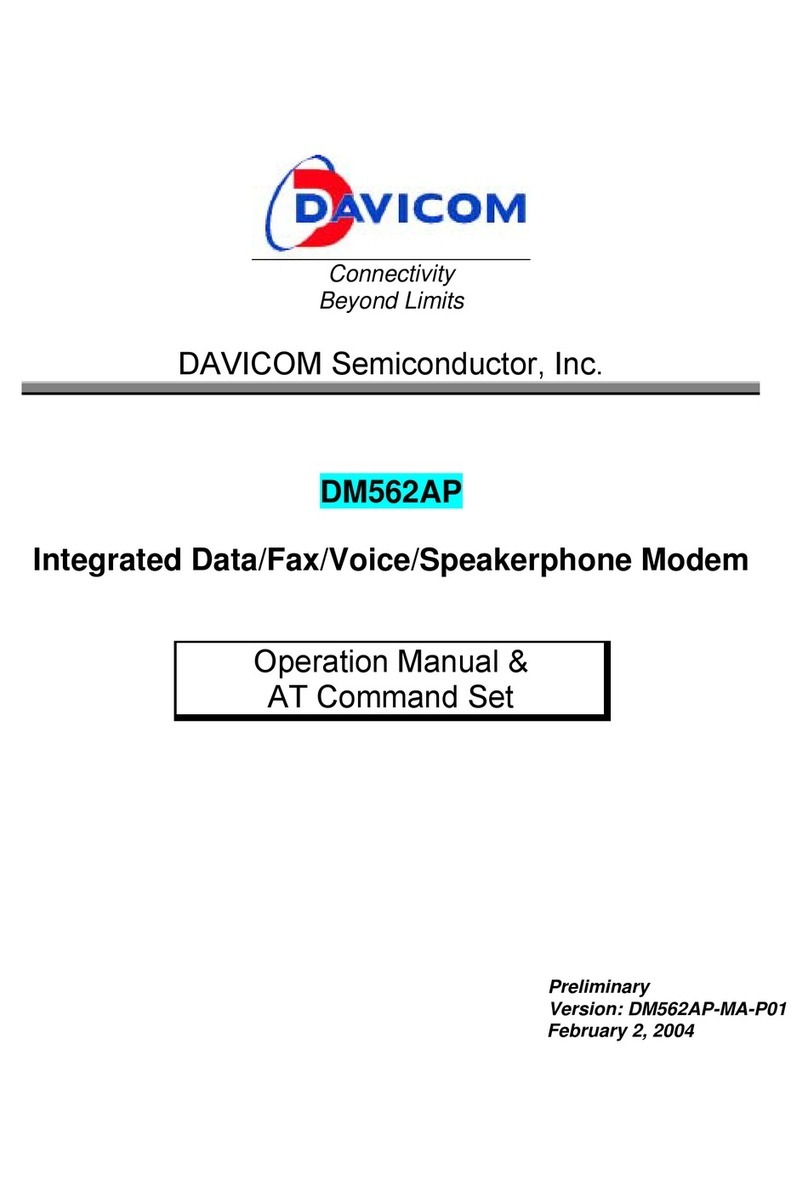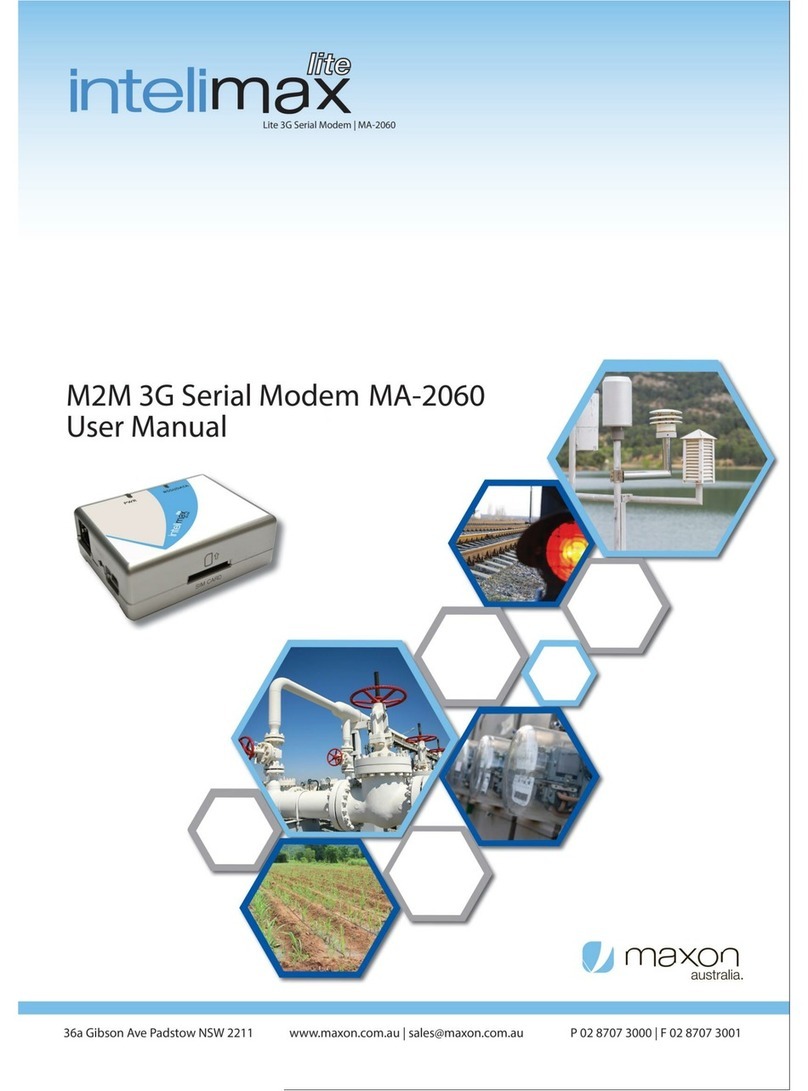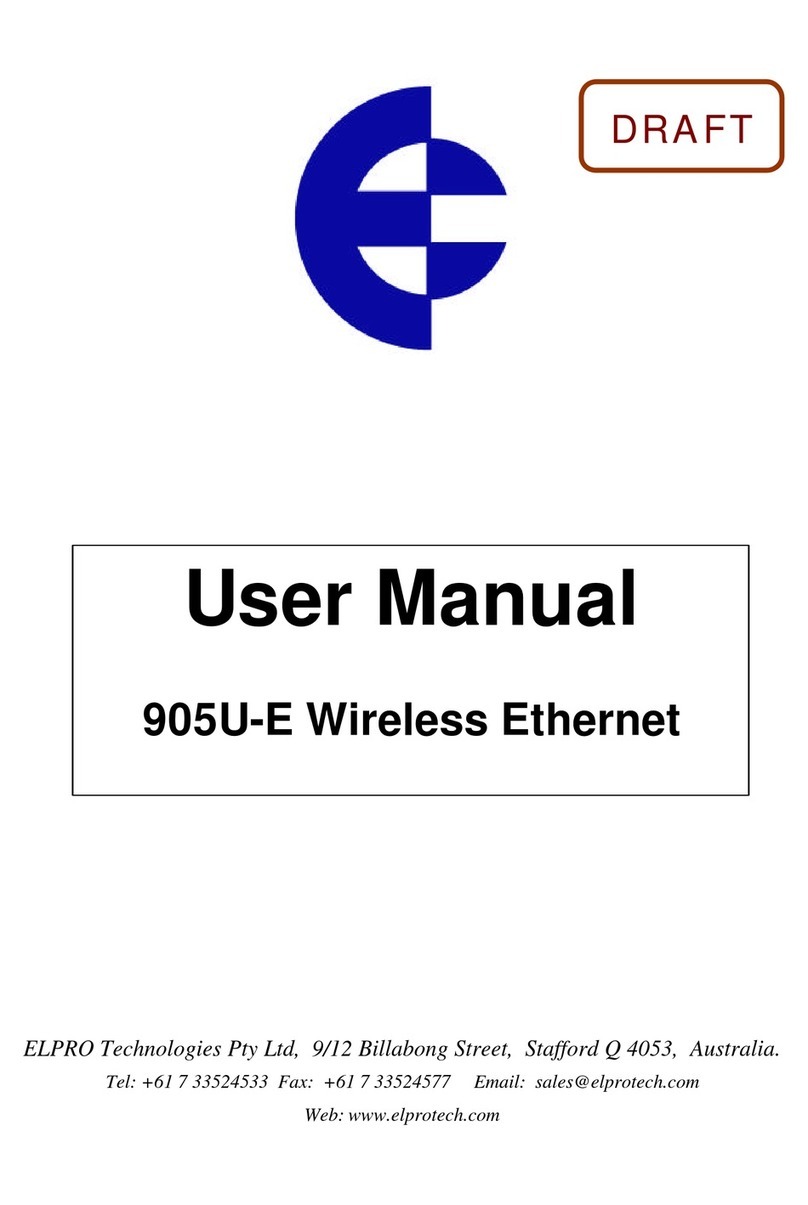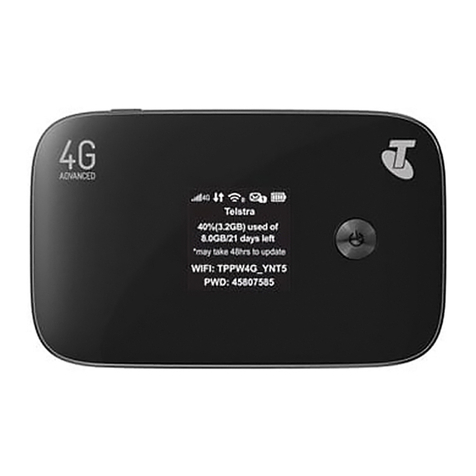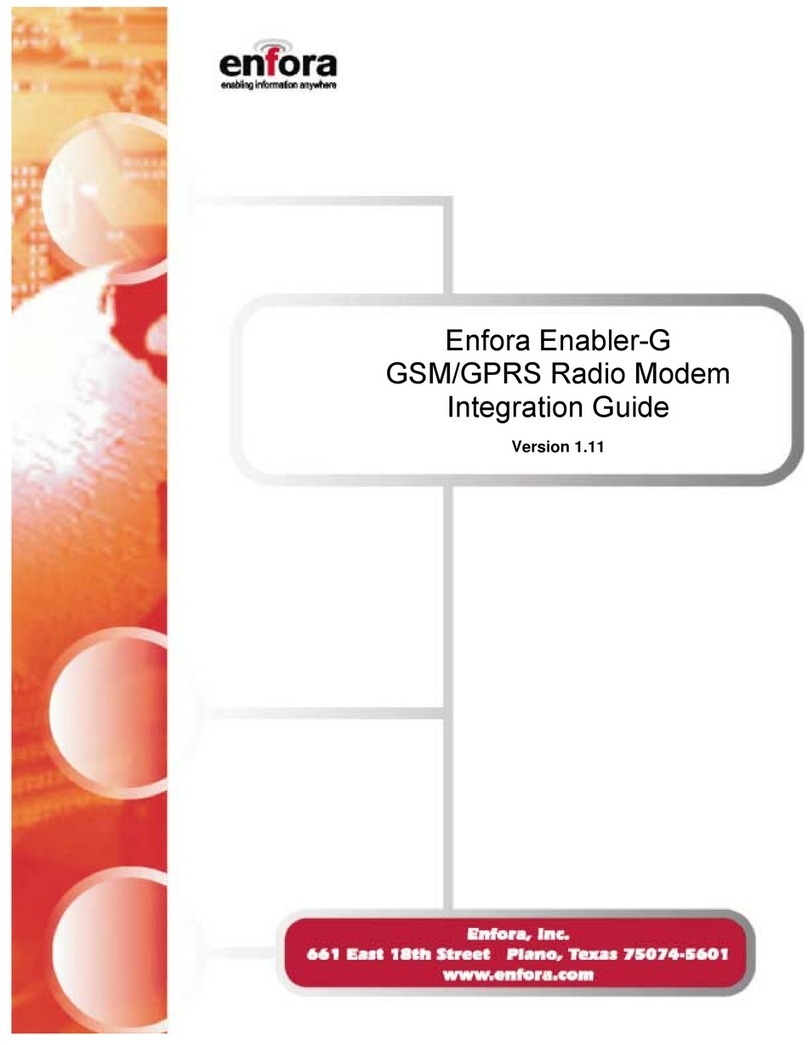ICP DAS, RFU-2400 Quick Start Guide, Version 1.0 Page 6
Copyright @ 2016 by ICP DAS Co., Ltd. All Rights Reserved.
4
Software Configurations
-RF Power
The “RF Power”parameter specifies the wireless transmit power value, and is
used to adjust the transmit power via the configuration utility. If the transmit
power is too low to be able to communicate with a remote device, increasing it
will improve the quality of the communication so that it becomes more stable.
Any adjustment of the RF Power should be performed in Software Configuration
mode (SW_Cfg), although the RF Power value affects the status of both the
Hardware Configuration (HW_Cfg) and the Software Configuration (SW_Cfg).
※The adjustment of this parameter is based purely on individual requirements, and ICP
DAS cannot guarantee compliance with CE/FCC certification if this parameter is
adjusted, nor is any liability assumed if the adjustment parameters are derived from
the RF Power.
Configuration Steps
Step 1. Move the INIT DIP Switch on the RFU-2400 to the ON position and then
reboot the device.
Step 2. Start the configuration utility for the RFU-2400 device and then select the
relevant COM port to establish a connection with the device.
Step 3. Click the “Read Configuration” button to display the current
configuration for the RFU-2400 device. Enter the required configuration
details and then click the “Start Configuration” button to save the new
parameters for the device.
Step 4. Once the configuration update has been completed, turn off the power
to the machine, move the INIT switch to off position, turn on the power
again to reboot the machine.
